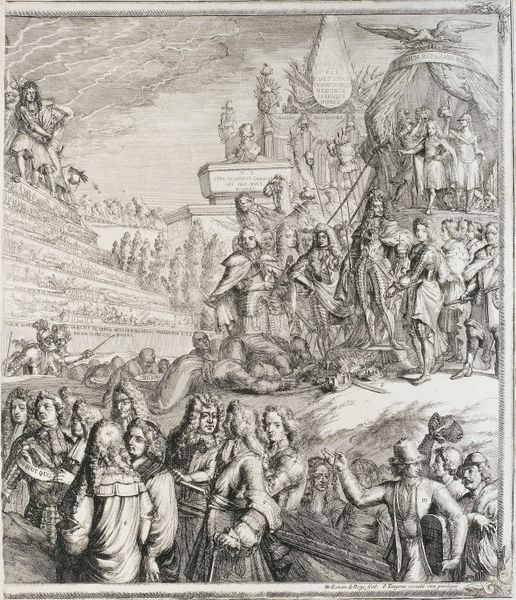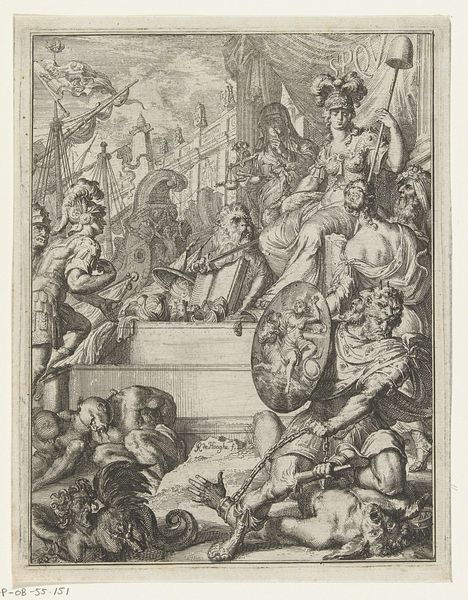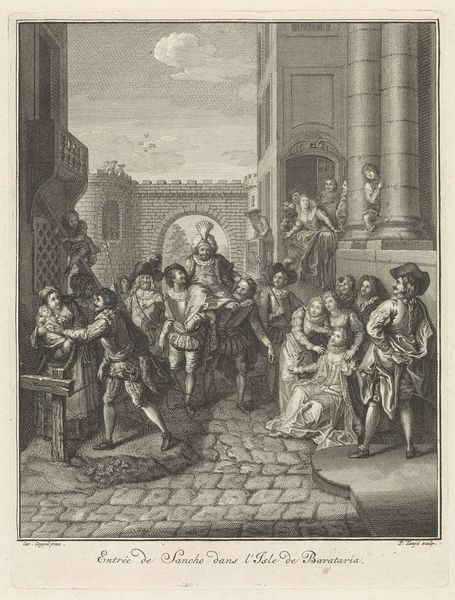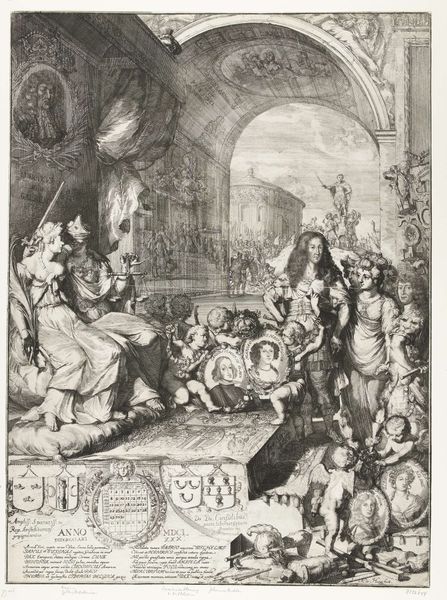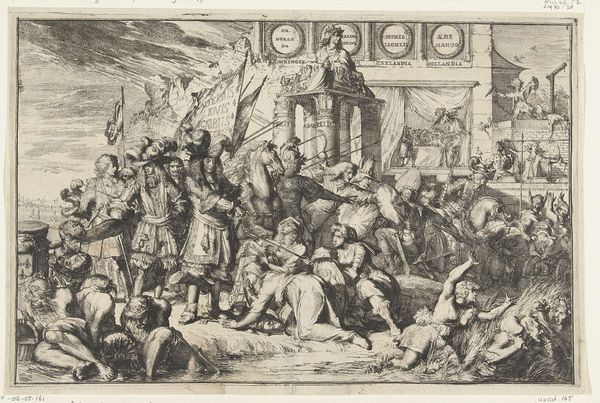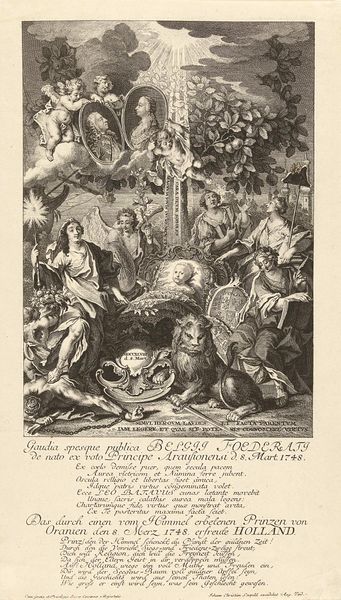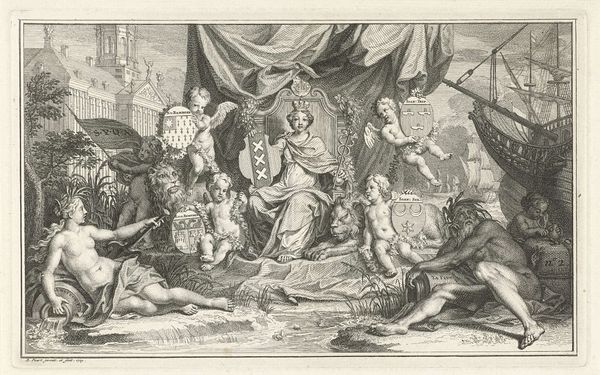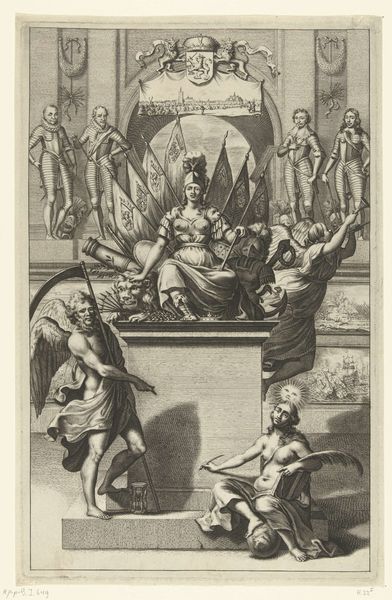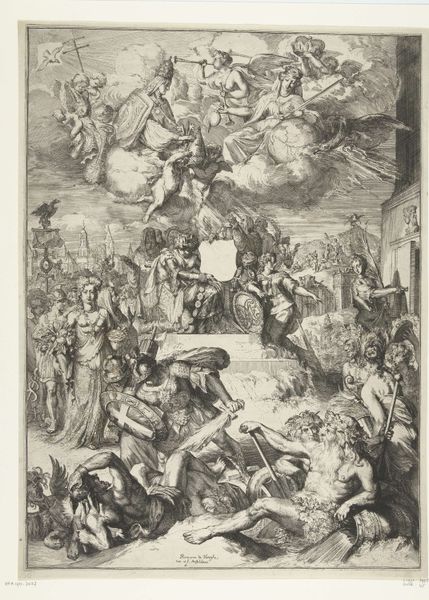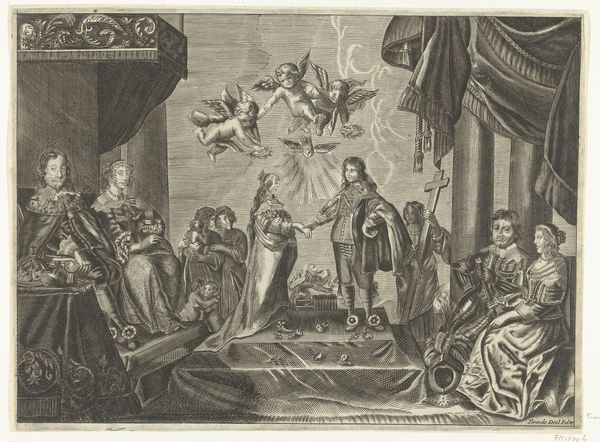
Allegorie op de gebeurtenissen in 1689 met Willem III en Maria op de troon (linker helft) 1690
0:00
0:00
engraving
#
portrait
#
allegory
#
baroque
#
figuration
#
line
#
history-painting
#
engraving
Dimensions: height 570 mm, width 487 mm
Copyright: Rijks Museum: Open Domain
Curator: This engraving from 1690 by Romeyn de Hooghe, titled "Allegorie op de gebeurtenissen in 1689 met Willem III en Maria op de troon (linker helft)," is part of the Rijksmuseum's collection. What strikes you about this piece initially? Editor: A sense of triumphant order emerging from chaos. The linear precision creates an almost diagrammatic presentation, contrasting the static figures at the top with the tumbling forms below. Curator: Exactly. The rigid linearity, particularly in the rendering of architectural elements and the figures' clothing, is characteristic of the baroque. But beyond style, notice how the composition uses a very clear visual hierarchy. William and Mary are elevated, literally and figuratively. What do you make of that elevation? Editor: The ascent symbolizes power, yes, but also a moral high ground. Their placement above the disarray below signifies a conquering of previous conflicts, visually embodying the transfer of power during the Glorious Revolution. Symbols of old rule lay shattered, quite literally, under their feet. Curator: Note the figures at the bottom, the tools and weapons scattered among them. The figures seem to be in states of distress and the presence of musical scores is intriguing in this context. It seems that some kind of cultural authority is either destroyed, transformed, or actively oppressed here. What do you gather from that imagery? Editor: It signifies the suppression, or perhaps reformation, of past regimes, the old order overturned in favor of new leadership. The fallen figures signify defeated ideals or systems, paving the way for the reign of William and Mary. The fractured objects and disrupted harmony suggest an era of transformation marked by potential social or cultural change. Curator: The engraving style also contributes to the overall meaning. The fine lines create a sense of detail, yet there's a starkness to it, don’t you think? There is no softening, and what is made is an explicit, unwavering picture of power and subjugation in one single picture plane. Editor: Yes, that absence of chiaroscuro lends it an analytical coolness, focusing attention on the clarity of forms and the dynamics between them. It directs us away from emotions and focuses the attention on a political statement made on a piece of paper. Curator: Ultimately, de Hooghe has provided us not just with a snapshot, but with a constructed narrative of profound political and cultural shifts. Editor: Agreed. The iconography underscores history. Its formalism underscores narrative, both intertwining for those to be led to either side.
Comments
No comments
Be the first to comment and join the conversation on the ultimate creative platform.
